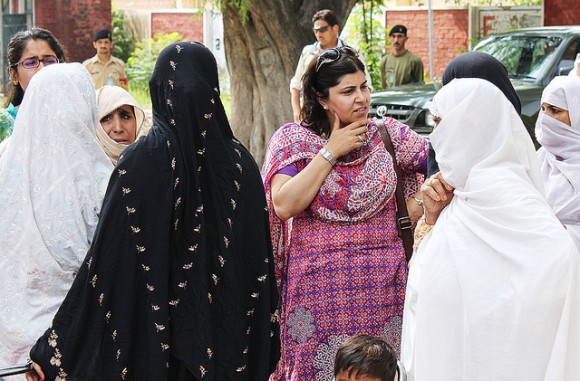A few days ago, a report by the UK’s Equalities and Human Rights Commission (EHRC), declared that over 5,000 women were missing from the top jobs in the UK. If you’re a development economist, you might recognise the language from Amartya Sen’s seminal piece, written over ten years ago, on the 100 million women missing in developing countries.
Although the EHRC wasn't talking about women in developing countries, it was still striking. It turns out that women aren’t doing too well at senior levels in the UK.
However, the UK’s civil service came out quite well – we’re on track to meet a government-wide target of 39% of women in the senior civil service by 2013. There are probably several reasons for this, but one I’ve noticed recently – at least in DFID – is that top management seem to invest in women staff, particularly through a programme called Crossing Thresholds. Crossing Thresholds is a leadership course, mostly for women in the civil service, run over 12 months in five modules. I've been on two modules so far and already learnt a great deal. I've even gained a female mentor in the top echelons of the Foreign and Commonwealth Office.

The last crossing thresholds module I attended was about prioritising – i.e. deciding between different tasks and which task to do when. As an economist I’ve always thought I should use "opportunity cost" to do so.
"Opportunity cost" is an essential concepts for economists. I covered two other key concepts in my last two blog posts in this series - "equilibrium" and "incentives". Opportunity cost is the third and final concept.
Put simply, opportunity cost captures the idea that everything involves choices or trade-offs. Nothing is exempt. Even making my morning cup of tea has an opportunity cost – I could have been working at my desk instead. It's the old adage: "there’s no such thing as a free lunch".
Opportunity cost is an incredibly important concept in development and environment. For example, as illustrated in this animation from the Center for Investigative Reporting (see below), the opportunity cost of petrol is not just the price you pay for it at the pump, but the costs of greenhouse gases, toxic gases, oil spills, and so on, on top. Opportunity cost helps express these extra negative effects of petrol.
Opportunity costs also help with expressing positive effects. For example, an American podcast from last year tells the story of Matt LeBlanc (not Joey from Friends!), who finds efficiency savings in a global firm. He does so through very simple changes – such as moving the desk of the person who makes the most cups of teas closest to the tea room. It sounds like an obvious change, but such changes tend not to happen because of culture, general inflexibility, etc. The changes don't "cost" anything, but they also don't take the positive effects of efficiency into account. Not changing has an opportunity cost - it costs the firm profits. Countries across the globe also exhibit these features – efficiency is often undervalued. It means, as this World Bank study shows, that awareness and other structural or institutional factors - rather than money - can often play a huge role in becoming green.
In a similar vein, Amartya Sen's article above explains how womens' opportunity costs are often more complex than mens'.
Personally, I meet opportunity costs all the time. Last week, I had to juggle writing a business case for a new programme on green growth, with helping the UK prepare for the Earth Summit due to take place in June in Rio next year, which will focus strongly on green growth. As I juggled, I was working through the opportunity costs of the two projects. On the one hand, taking the opportunity to write the business case would make my work on green growth more effective and efficient. But that could cost the Earth Summit preparations, and vice versa.
But during my Crossing Thresholds module on prioritisation, I realised that opportunity cost doesn’t really help me prioritise. All it does is make me think through possible alternatives, and can send me into even more of a tailspin about how many other things I should be doing! So I took off my economist’s hat and instead learnt about time management techniques such as Stephen Covey’s "important-urgent" matrix and Ken Blanchard' slightly different "have-want-to" matrix. I’m definitely feeling more efficient as a result. I might even find some time to take the FT’s unusual advice to read a recently published women’s self-help book!
I'm glad that DFID, alongside prioritising women and girls in all our aid, supports women staff like me to take leadership courses like Crossing Thresholds. Doing so might just help avoid the opportunity costs of missing women at the top in the UK.

1 comment
Comment by Victoria Ndolo posted on
The Crossing the Threshold Programme is truly a women empowering one. Personally I wish I was able to position myself for the future.I live in Kenya and most of the times women lack the know how to think strategically and position themselves better for the future. We do not have courses targeted for the women only and often it is the men who are in senior positions go for the workshops and seminars. I believe you are doing a great job for the women.
Carry on the good work.Go women!